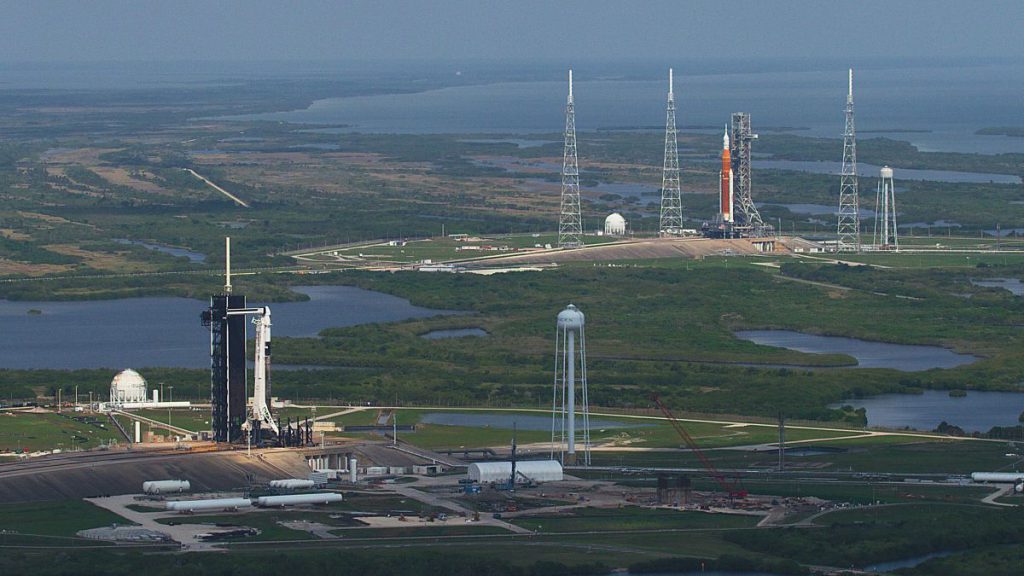CAPE CANAVERAL, Florida — SpaceX will launch a former NASA astronaut and three paying customers on a journey to the International Space Station. That mission, called Ax-1, lifts off today (April 8)!
Today’s launch, which comes a couple of days later than expected after a delay of NASA’s Artemis 1 “wet dress rehearsal,” will kick off the first crewed mission organized by Texas-based company Axiom Space. Ax-1 will launch on a 10-day mission to the space station commanded by former NASA astronaut Michael López-Alegría. The mission will also fly paying passengers Larry Connor, Mark Pathy and Eytan Stibbe.
Ax-1 is set to launch today (April 8) at 11:17 a.m. EDT (1517 GMT) from Pad 39A at NASA’s Kennedy Space Center here on Florida’s Space Coast. The crew will take off aboard a SpaceX Crew Dragon vehicle atop a Falcon 9 rocket.
You can watch the launch live right here at Space.com or directly via SpaceX’s YouTube page (opens in new tab). The live webcast will begin at about 7:55 a.m. EDT (1155 GMT).
Live updates: Ax-1 private mission to space station
Related: Axiom Space: Building the off-Earth economy
The details: Ax-1
If today’s launch goes to plan, Ax-1 will dock with the space station tomorrow (April 9) at approximately 7:30 a.m. EDT (1130 GMT). The mission will last a total of 10 days, with eight of those days being spent by the crew aboard the space station. This will be the first crewed mission for Axiom Space as well as the first fully private mission to the station.
“When I was a kid, I was so inspired by the early manned missions that NASA had put in the first three [human spaceflight programs] — Mercury, Gemini and Apollo missions,” López-Alegría said during a pre-launch news conference on April 1. “It was such an inspiration to me, and to be able to participate in what I think is opening the next chapter is truly an honor.”
“I can say with zero hesitation that we are ready to fly,” he added.
Ax-1 will carry López-Alegría and his three crewmates to the orbiting lab. Ahead of the launch, the crew has been completing a pre-flight quarantine, something that is routine for all astronauts across companies and space agencies. This serves to protect all astronauts aboard the space station from any contagion that could be carried with the incoming spaceflyers.
The three paying crew members, who are thought to have paid about $55 million each for their seats, won’t just be joyriding, however. They will be carrying with them supplies and science experiments to conduct on the space station.
These experiments include a “brain headset” from an Israeli startup that aims to study how the brain responds to spaceflight and living in space as well as other scientific equipment from the nonprofit Ramon Foundation. Mission specialist Stibbe is carrying these experiments with him on behalf of the foundation, which he co-founded in memory of his friend, Israeli astronaut Ilan Ramon, who died aboard the space shuttle Columbia during the mission’s tragic ending in 2003. Stibbe will be the second Israeli to reach orbit; Ramon was the first.
Axiom’s Ax-1 mission is a major first for the company, but it’s part of a much larger plan to create a commercial space station in orbit. The company has already begun construction on what it says will be the world’s first commercial space station.
Axiom plans to launch its first module to the ISS in 2024, then send several more up over the following few years. These modules will eventually detach from the ISS and become Axiom’s free-flying station in orbit, the company has said.
Why the delay?
The mission’s launch was postponed from April 6 to April 8, likely due to delays with NASA’s Artemis 1 wet dress rehearsal. The wet dress, which is essentially a rehearsal for launch that includes fully fueling up the rocket and conducting a countdown as well as a multitude of other steps to ensure that the actual launch day goes to plan, faced issues at the pad, moving the fueling portion of the test from April 3 to April 4.
“Inspections after the second test showed the vent valve that prohibited the team from proceeding with loading liquid hydrogen was configured physically in a closed position, which prevented it from being commanded remotely to an open position. The valve positioning has since been corrected,” NASA said in a statement (opens in new tab).
While test activities were conducted on those two days, the test was delayed even further and, on April 5, mission team members announced in a news conference that the Axiom launch would go ahead and Artemis 1 activities would resume after the launch.
Email Chelsea Gohd at cgohd@space.com or follow her on Twitter @chelsea_gohd (opens in new tab). Follow us on Twitter @Spacedotcom (opens in new tab) and on Facebook.

